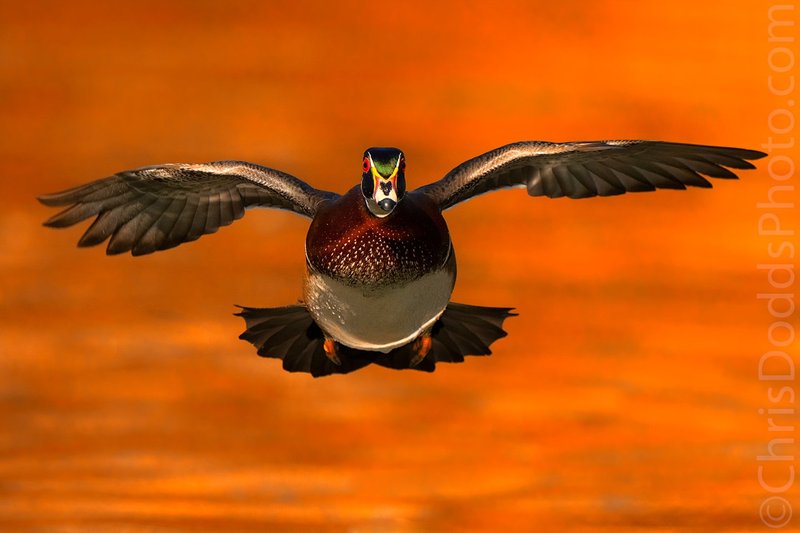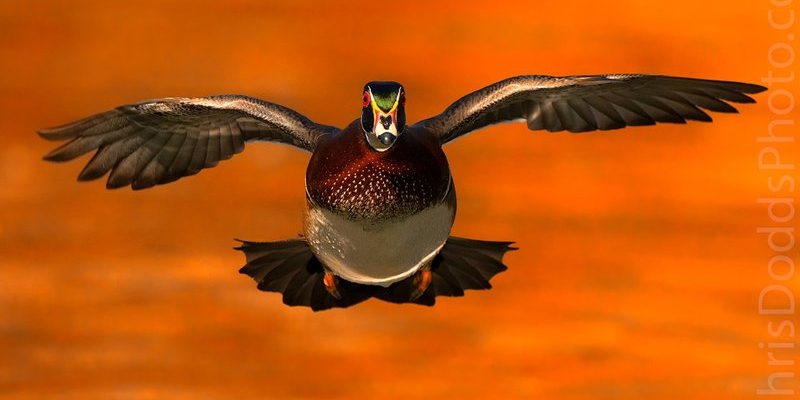
Ducks are incredibly versatile creatures. They can hover, dive, and even change direction mid-flight. This flexibility is not just for show; it’s a crucial part of their survival. Imagine being at a busy intersection where cars are constantly moving. You’d need to be quick on your feet to avoid getting hit. Ducks operate in a similar way, using their skills to dodge predators and capture their meals.
In this article, we’ll explore the unique flying and hunting techniques of ducks. From their incredible flight patterns to their methods of catching food, there’s so much to discover. So, let’s dive in!
The Anatomy of a Duck’s Flight
To understand how ducks fly, we need to look at their anatomy. Ducks have a unique body structure, designed specifically for efficient flight. Their lightweight bones, strong muscles, and specially shaped wings all contribute to their ability to soar through the air.
Duck wings are broad and pointed, providing a large surface area that generates lift. When ducks flap their wings, they push against the air, allowing them to ascend quickly. You might think of their wings like a great athlete’s arms, helping them gain momentum while flying. Additionally, ducks have a special feature called a “preen gland” located near their tails. This gland produces oil that they spread over their feathers, keeping them waterproof and streamlined for flight.
Another vital part of their anatomy is their powerful breast muscles. These muscles account for nearly 20% of a duck’s body weight. Just as a runner needs strong muscles to sprint effectively, ducks rely on these muscles to flap their wings vigorously and maintain speed. All of these factors work together to create the perfect flying machine.
Flight Patterns: The Art of Formation
Have you ever watched a flock of ducks flying in a V formation? This isn’t just for aesthetic purposes; it’s a smart strategy. Flying in formation allows ducks to conserve energy. The lead duck breaks the air resistance, making it easier for the others to follow.
As the lead duck gets tired, it will drop back, and another duck takes its place. This teamwork can keep the flock flying longer distances without tiring out too quickly. Ducks can cover hundreds of miles with this efficient flying technique, especially during migration.
When it comes to hunting, ducks also adjust their flight patterns to suit their needs. For instance, they might fly close to water’s surface to avoid predators or to make it easier to spot food. Their ability to change directions and altitude quickly gives them an edge when hunting as well.
Diving and Dabbling: Two Styles of Feeding
Ducks have different techniques for feeding depending on their species. Dabbling ducks—like mallards—feed by tipping forward in the water, with their heads submerged while their tails stick up in the air. They forage for plants, seeds, and insects close to the surface. Dabblers are often seen in shallow water, where they can easily reach their food without needing to dive completely under.
On the other hand, diving ducks—such as canvasbacks—have a more robust build designed for deeper water. They can dive down to great depths to catch fish or mollusks. Imagine going to a restaurant where you can only see the appetizers on the surface. Diving ducks are the ones who go below to find the main course. Their strong legs enable them to swim efficiently underwater, making them powerful hunters.
These feeding techniques not only showcase their adaptability but also demonstrate how different species have evolved unique methods to thrive in their environments. You might think of it like two chefs in a kitchen, each specializing in a different cuisine based on the ingredients available to them.
Hunting Techniques: The Element of Surprise
Ducks are smart when it comes to hunting. They often rely on stealth and surprise to catch their prey. For instance, they may spot fish swimming just beneath the surface and then dive with incredible speed. Their streamlined bodies help them cut through the water, making them both fast and agile.
Additionally, ducks may employ a technique called “still-hunting.” This is where they remain motionless for a period, allowing fish or insects to swim closer before striking. It’s like being in a game of hide and seek—sometimes staying still is the best way to catch your target unaware.
Moreover, ducks sometimes hunt in groups, increasing their chances of success. When they work together, they can drive fish into tight spots, making it easier for everyone to feast. This social aspect of hunting not only helps them find food but also strengthens their bonds within flocks.
The Role of Vision and Hearing in Hunting
Ducks are equipped with excellent vision and hearing, which play critical roles in their hunting success. Their eyes are positioned to give a wide field of view, allowing them to spot predators and prey from a distance.
Unlike humans, ducks can see ultraviolet light, which helps them detect food that we may overlook. It’s like having a superpower that gives them an edge in foraging. Imagine being able to see colors that others simply can’t; that’s the advantage ducks have when scouting for food.
Hearing is equally important. Ducks can pick up on subtle sounds in their environment, helping them locate the movement of fish or the rustling of insects. This acute sense of hearing, combined with their sharp vision, makes them formidable hunters in various environments.
Adaptability: How Ducks Stay Ahead
Ducks have an impressive ability to adapt to various environments, which is crucial for both flying and hunting. They thrive in diverse habitats, from lakes and rivers to marshes and ponds. Some might even say they’re the ultimate survivors in the bird world.
One fascinating aspect of their adaptability is how they adjust their diets based on what’s available. In winter, when food is scarce, ducks might change from a plant-based diet to include more invertebrates or fish. This can be likened to chefs adjusting their menus according to seasonal ingredients. By being flexible and resourceful, ducks can maintain their energy and health throughout the year.
Additionally, ducks have learned to adapt their flying patterns to avoid urban environments. You might notice them flying at different heights or changing their routes to escape busy areas. This ability to modify their behavior shows just how clever these birds are, ensuring they can thrive in an ever-changing world.
The Importance of Duck Conservation
As we admire the unique flying and hunting techniques of ducks, it’s essential to remember the importance of conservation. Many duck species face challenges due to habitat loss, pollution, and climate change. Protecting their habitats is vital not only for their survival but also for maintaining the ecosystems they inhabit.
Conservation efforts, such as wetland preservation and responsible hunting regulations, play a crucial role in safeguarding these amazing birds. You might be wondering how you can help—supporting local conservation organizations, participating in clean-up initiatives, and advocating for policies that protect natural habitats are all effective ways to contribute.
Ducks are more than just beautiful creatures; they are vital components of our ecosystems. By ensuring their survival, we preserve the intricate balances of nature that benefit us all.
In conclusion, the flying and hunting techniques of ducks are truly remarkable. From their incredible adaptability to their unique feeding styles, these birds have honed their skills to thrive in diverse environments. By understanding and appreciating their techniques, we can foster a deeper respect for the natural world and the creatures that inhabit it. So, the next time you see a duck in flight, take a moment to admire not just their grace but also the fascinating world of behaviors that drive their survival.

